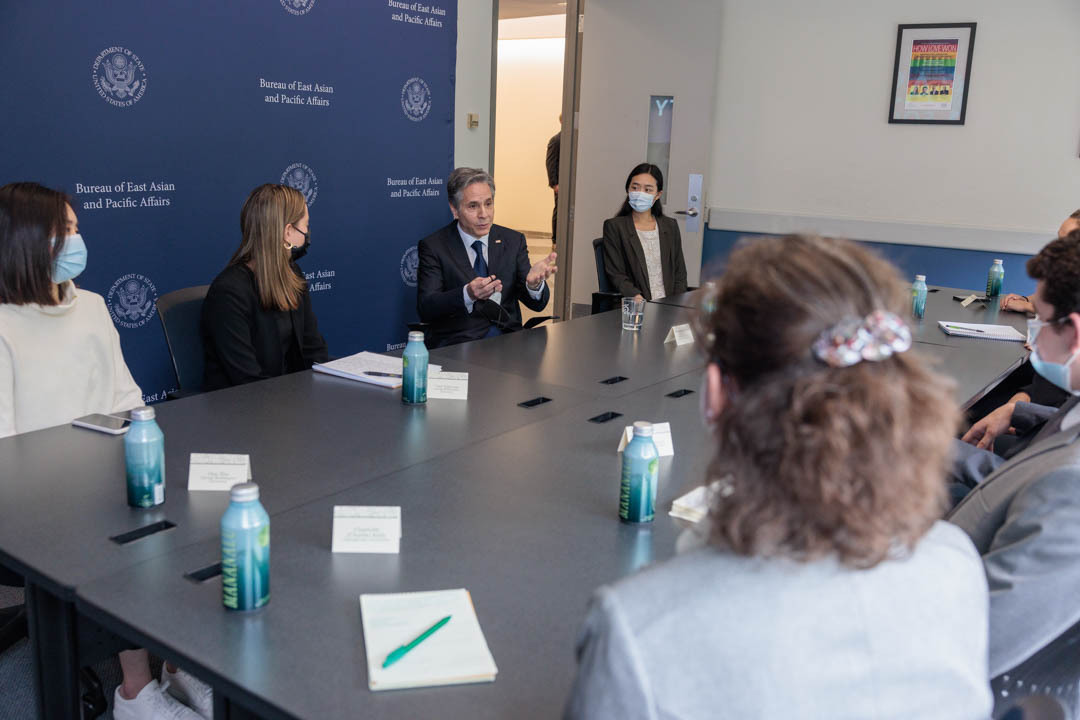By Greg Varner
The importance of chemistry to the U.S. economy is pivotal, as shown in a report released Thursday by the National Academies called “The Importance of Chemical Research to the U.S. Economy.” The report is the result of a consensus study group chaired by George Washington University President Mark S. Wrighton, with members drawn from other educational institutions as well as industry.
The study, available from National Academies Press, was sponsored by the American Chemical Society, National Institute of Standards and Technology, National Science Foundation and U.S. Department of Energy.
“The role of chemistry in the U.S. economy is extraordinarily large,” Wrighton said during a virtual launch event for the report. Strengthening investment in chemical research, he added, could stimulate economic growth while advancing a sustainable environment.
Work on the study began in 2020, spurred by the recognition that there is currently no national strategy to identify research priorities that would lead to sustainable growth of the chemical economy. The report is thus timely, Wrighton said. He pointed to remarks made by Secretary of State Antony Blinken when he spoke on the GW campus in May.
In those comments, Blinken described the changing relationship of national spending on research and development to our gross domestic product (GDP), or value of the goods and services we produce.
“Because our industrial strategy centers on technology,” Blinken said, “we want to invest in research, development, advanced manufacturing. Sixty years ago, our government spent more than twice as much on research as a percentage of our economy as we do now—investments that, in turn, catalyzed private-sector innovation. It’s how we won the space race, invented the semiconductor, built the internet. We used to rank first in the world in R&D as a proportion of our GDP—now we’re ninth.”
The study group points out that the chemical industry was responsible for approximately $5.2 trillion, or approximately 25%, of U.S. GDP in 2020 and about 4.1 million jobs in the United States. Chemists, according to the report, “have created life-saving pharmaceuticals, developed energy solutions, improved agricultural productivity and produced novel materials used in a wide array of products, from cookware to clothing to electronic devices.”
Patents that cite chemical research are more valuable, on average, than patents that don’t. What can be done to ensure the international competitiveness of the United States in the future?
The report identifies a few important areas of focus in terms of supporting chemical research and fostering emerging processes and technology.
“We have paid a great deal of attention to the role of chemistry in sustainability,” Wrighton said. The study group’s vice chair, Cathy Tway of Johnson Matthey, a multinational company that specializes in chemicals and sustainable technologies, echoed his remarks.
“The chemical economy really is part of a much more complex ecosystem,” Tway said.
The report is intended to help guide policy and funding decisions around chemical research, she said and also stressed the importance of fostering international talent and supporting the open exchange of ideas in the chemical sciences.
“We would not have the life we have today without advances in chemistry,” Tway said, adding that prime areas for future chemical innovation include, among others, feedstocks and energy.
Research is going to enable further advances, Wrighton said, with significant consequences for employment. He emphasized the need to strengthen diversity, equity and inclusion in the field.
“The employment that we currently see is not reflective of our population and the demographics that we see in the future,” Wrighton said. “We need to expose our students and indeed some of our mature colleagues to opportunities for internships.”
Another member of the study group, Raychelle Burks, associate professor of chemistry at American University, agreed with these remarks and alluded to the rapid pace of technological development.
“We are all going to need to be retrained,” Burks said, “not only for our students but to stay abreast of our field.”
There is a need for greater investment in infrastructure at research universities, Wrighton said, adding, “Institutions that have very modest endowments that are struggling to develop their own infrastructure have extremely talented people with great ideas.”
Steps should be taken, Wrighton said, to lower barriers to collaboration across disciplines. For example, there are areas where chemists contribute to electronics. Students could be given internships and summer opportunities in industries related to the work that they aspire to be doing.
“The promises of chemistry remain very significant,” Wrighton said, citing approaches to curing and managing disease as examples. “We look back on the last few years and see tremendous advancements in the developments of diagnostics, vaccines and pharmaceuticals. This has been a stunning success for the American scientific enterprise and chemistry has played a critical role.”
All of the members of the study group stress the report’s richness.
“This is a great resource book,” Burks said. “We’ve really jam-packed the report full of good solid references and actionable items. It’s a bit more than a report. It’s a guide.”



